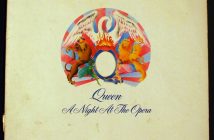In the same week that Marvel announced that Tom Holland would be playing their new Peter Parker/Spider-Man, we were also privy to two interesting pieces of information about the character. The first being that Stan Lee – the man behind Spider-Man and many (seriously, so many) other classic Marvel characters – does not agree with changing characters in the modern comic book canon. He recently stated in an interview with Newsarama that he doesn’t see any reason to change Peter Parker from who he originally was – which was and always has been a white, heterosexual man.
Lee is by no means a prude or afraid of change. He has previously voiced his opinion that the world definitely needs more gay and racially diverse superheroes, and that one of the things he loves about Spider-Man is that it could be anybody underneath the mask. However, it would seem that Lee also believes that Peter Parker should stay the same as he was written in the comics.
Now let’s keep this short – the comics were made in the 1960s, an era famous for it’s ‘tolerance.’ These characters are white because of the time they were produced in, but nothing about their character NEEDS to be white. Black Panther should be black because he’s an African King – It’s certainly a racially iffy character, that the first major black superhero was an African king, but that is key to who he is. The character of Peter Parker however, as a guy from modern-day New York (Queens even) could actually make more sense as a racial “minority.” This goes for both the comics and the films. This summer, Fantastic Four is being released with Michael B. Jordan playing the role of Johnny Storm – a superhero depicted as a white man in the comics. Jordan is black, so the internet (or at least the dark side we’re talking about) threw quite the racist tantrum. But Johnny’s whiteness is only really important in relation to his sister Sue, who in the upcoming film (played by Kate Mara) is going to be portrayed as his adoptive sister (the delicious irony). That’s a modern, diverse family – one which reflects director Josh Trank’s own upbringing. Will the film be good? No-one knows just yet, but for that progressiveness, it’s a win.
The second thing we learnt this week; the film rights laid upon Sony by Marvel in 2011 originally stated that Peter Parker must always be from Queens, in high school or college, and a straight, white male. These rights however were much less specific about the character of Spider-Man, and did not specifically state that Spider-Man must always be Peter Parker. As Lee said – it could be anyone under that mask – and as the Ultimate Spider-Man series proved with the insanely popular character of Miles Morales, in the end it doesn’t matter what race the character is, so long as he’s a decent web-slinger.
Miles is a half-black, half-latino teenager from Queens, who like Parker becomes Spider-Man. In his first appearance, he is abused for dressing up as the recently deceased Spider-Man, but grows to be accepted by New York as their new hero. He’s not the only character who has adopted another’s hero moniker. Kamala Khan is the new Ms. Marvel – taking Carol Danvers’ (now Captain Marvel) former identity. Kamala has completely different powers to Carol, and is also a Pakistani teenage girl living in New Jersey. The character is not just a great step forward for Marvel in terms of diversity, but she’s also in a great comic book. She is both what Lee wants and what he doesn’t: a new character, under an old name. Creating new characters is risky, because on their own they may not do well enough to keep the comic afloat, but Kamala did. And so did Miles. SO much so that in Marvel’s massive relaunch this year, it was announced that it would be him, rather than Parker, heading up the new Spider-Man comic.
Lee does have a point, and you can hardly say his right to be peeved at the meddling with his creation is unjust. He is the Godfather of Marvel Comics. But new characters don’t necessarily have to mean new heroes, and when it comes to the films, forget about it. Yes, Peter Parker is going to be white. But Johnny Storm isn’t! Storm is proof (or at least we hope – if the film is bad I will be eating my words) that many of these characters aren’t tied to their comic book race. DC’s Bruce Wayne kind of needs to be white – he’s one of the richest men in the world. But Marvel’s ‘every-person’ heroes don’t. They are proving this with every passing day in the comics. It’s not quite the same in the films… yet. But we’re getting there.




